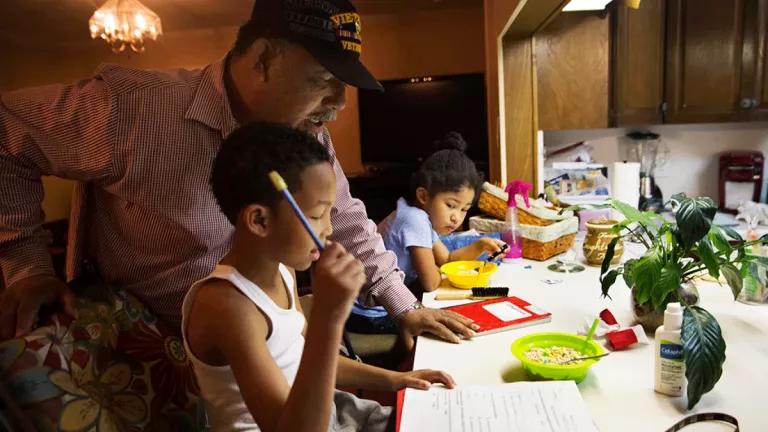Empty Nests
A Louisiana oysterman wants to pass on his trade to his grandkids—if only there were any oysters left to catch.

Sarah Craig
In 2010, NRDC partnered with StoryCorps and Bridge the Gulf to tell stories of people living through the Deepwater Horizon disaster. As the five-year mark approaches, onEarth revisited Gulf residents for an update. Third of four parts.
Along the east bank of the Mississippi River, about 30 miles south of New Orleans, lies a tiny African-American fishing community called Point a la Hache. Here, Byron Encalade and his friends would spend their days hauling in sweet oysters that populate the reefs in the fertile bayous nearby.
But not these days. Ever since the BP disaster five years ago, which flooded estuarine marshes with oil, those reefs have been void of oysters. To flush the oil out, cleanup efforts included massive freshwater diversions. Oysters, unfortunately, are very sensitive to changes in water salinity, so those in the bayou soon died out. They have yet to return.
Encalade, one of many Vietnam vets in his community, once owned trucks that hauled fresh seafood to New Orleans markets, He never expected that his long career on the water would end this way. “The hardest thing is seeing my boats down there deteriorating,” he says. “I don’t have the money to maintain them, to fix them.”
As president of the Louisiana Oystermen Association, Encalade says many fishermen are desperate for work and living on food stamps. Some blame the toxic mix of oil and dispersants for preventing the oysters from coming back.
It takes years for oyster colonies to mature, and so far there’s little evidence that spat—baby oysters—are growing on the public reefs where Encalade and his neighbors fish. The once abundant oysters of Point a la Hache have a dubious future—and it saddens Encalade that his grandkids won’t have the chance to make a living out on the water. “I know I’ll never be able to teach them how to fish,” he says. Listen to his story below.
This article was originally published on onEarth, which is no longer in publication. onEarth was founded in 1979 as the Amicus Journal, an independent magazine of thought and opinion on the environment. All opinions expressed are those of the authors and do not necessarily reflect the policies or positions of NRDC. This article is available for online republication by news media outlets or nonprofits under these conditions: The writer(s) must be credited with a byline; you must note prominently that the article was originally published by NRDC.org and link to the original; the article cannot be edited (beyond simple things such grammar); you can’t resell the article in any form or grant republishing rights to other outlets; you can’t republish our material wholesale or automatically—you need to select articles individually; you can’t republish the photos or graphics on our site without specific permission; you should drop us a note to let us know when you’ve used one of our articles.

What We Learned from the BP Oil Disaster
Gone Fishing
A Recurring Nightmare